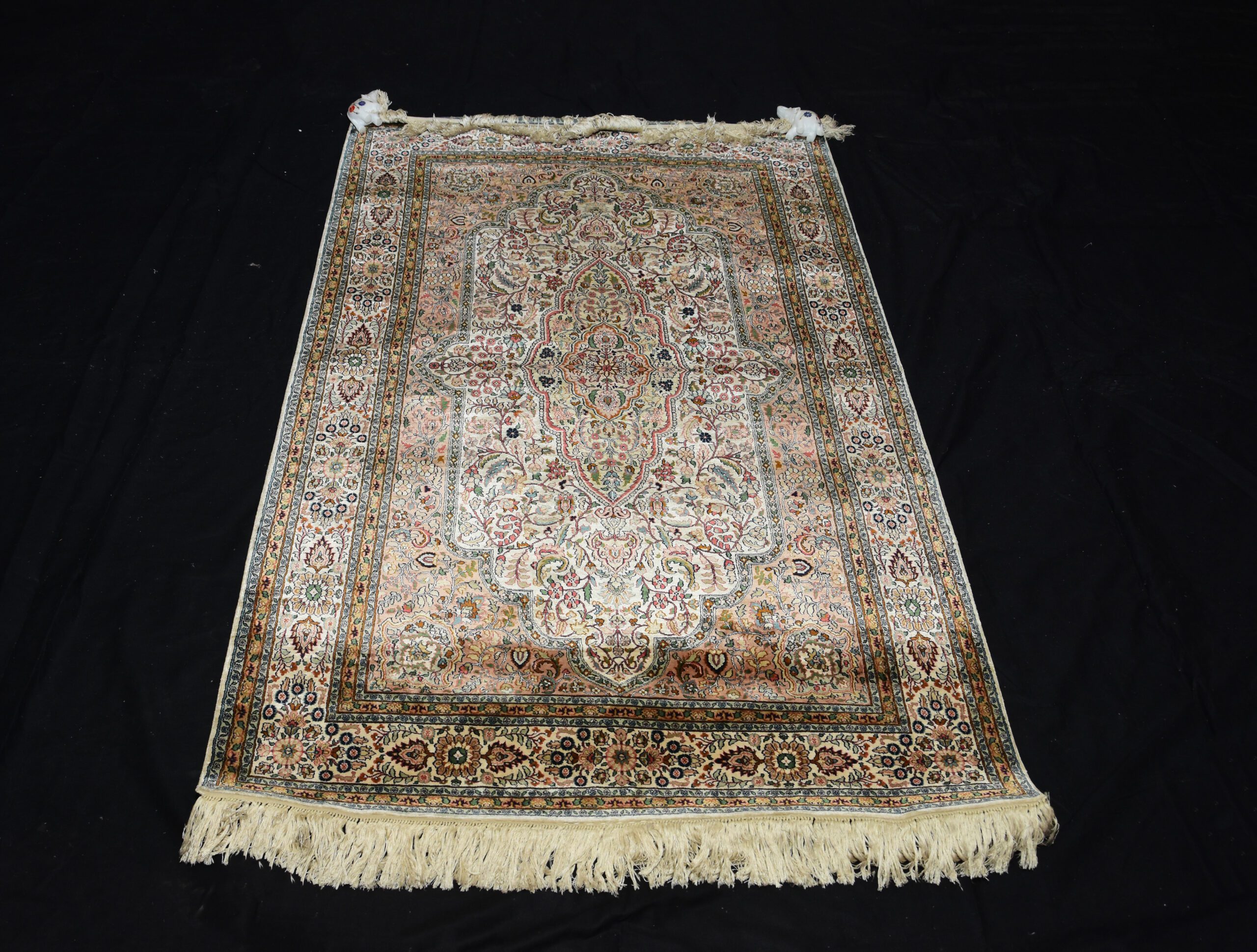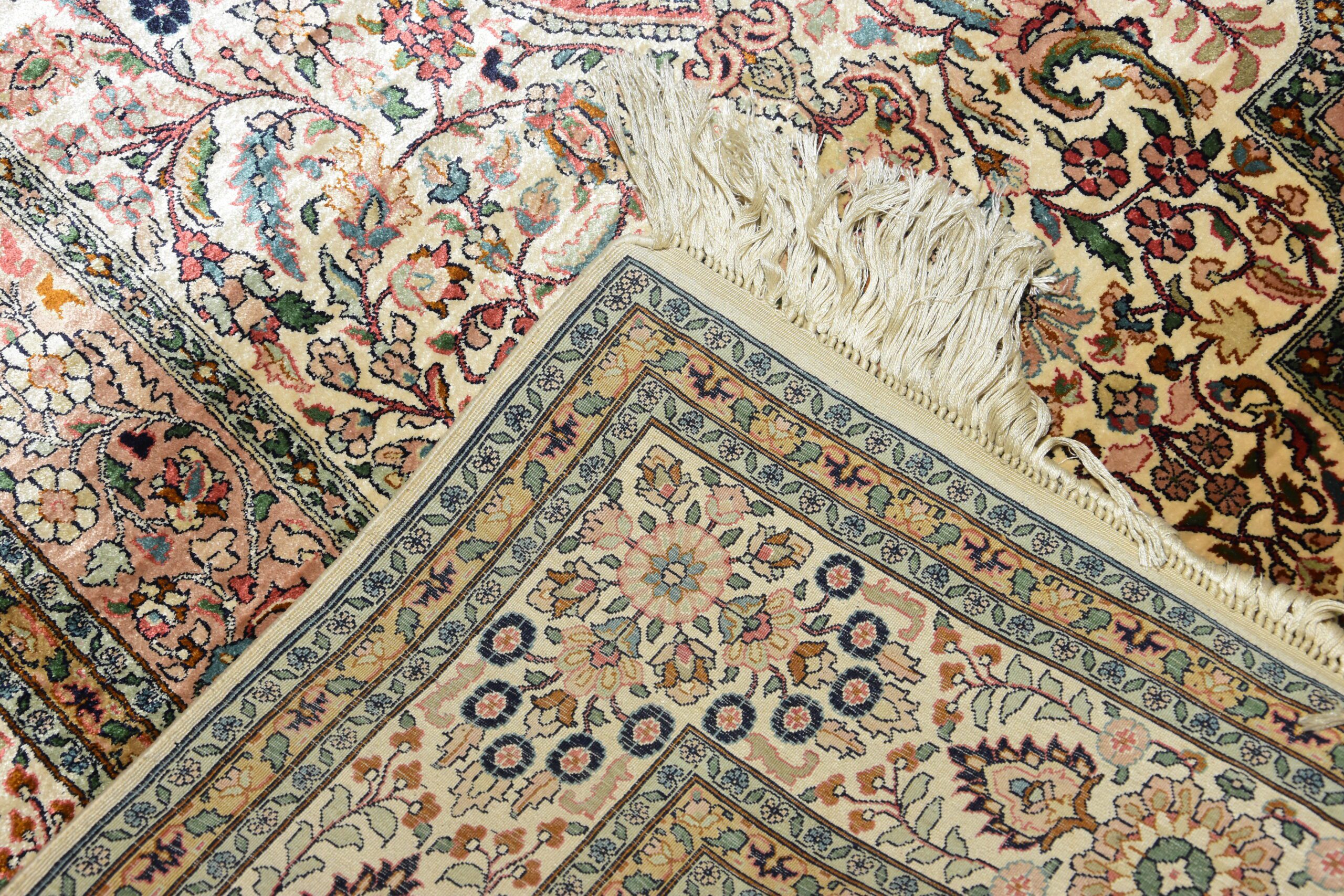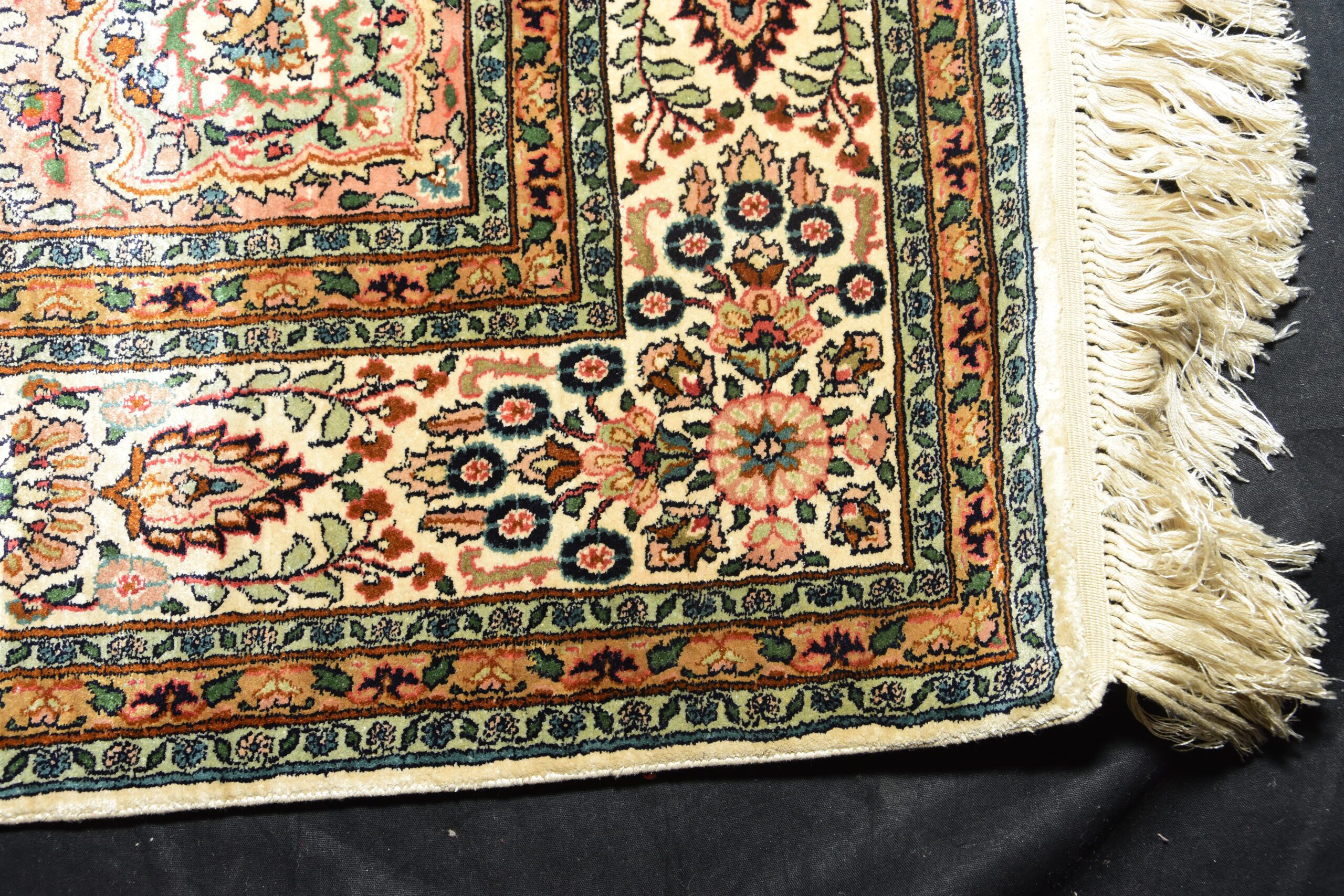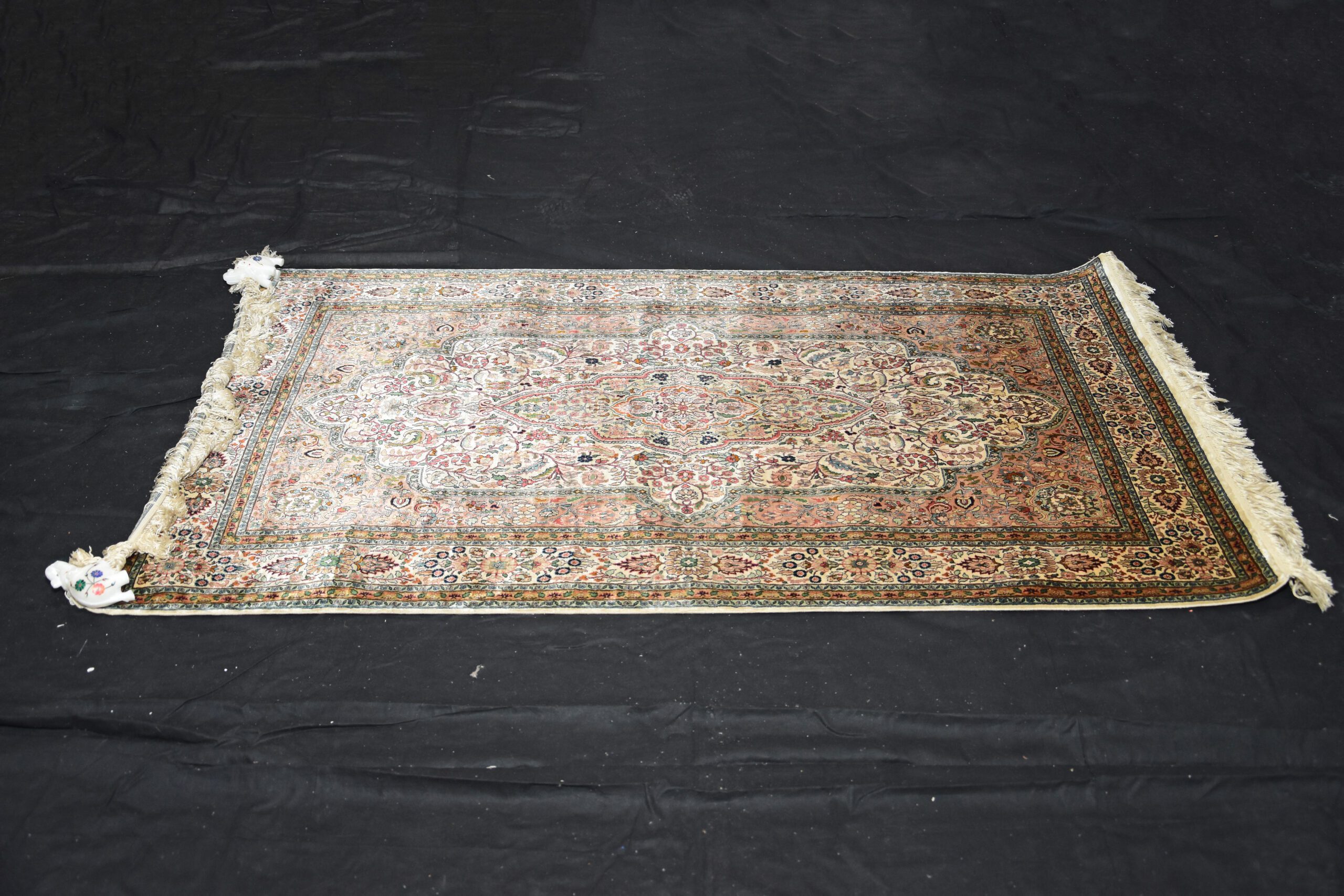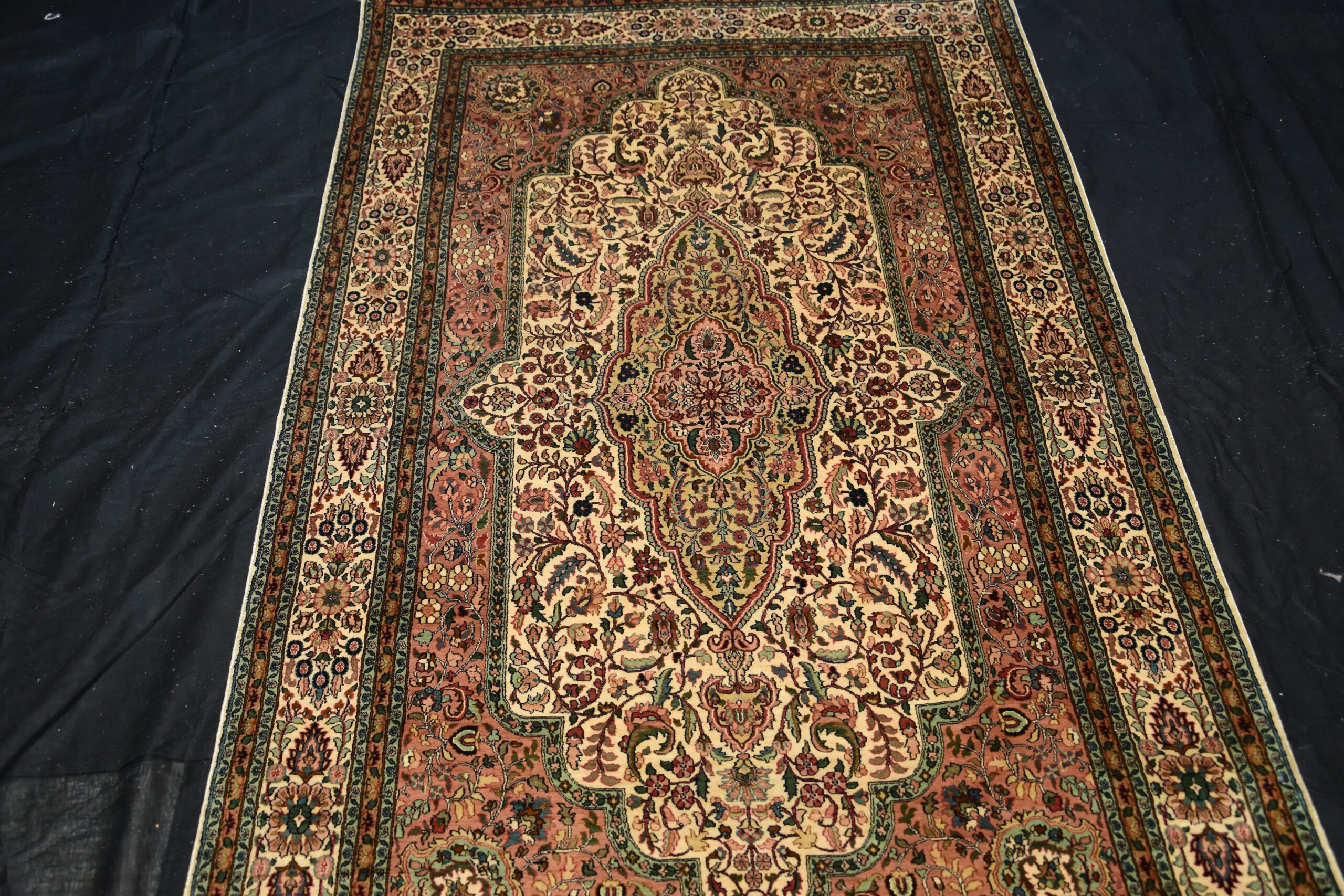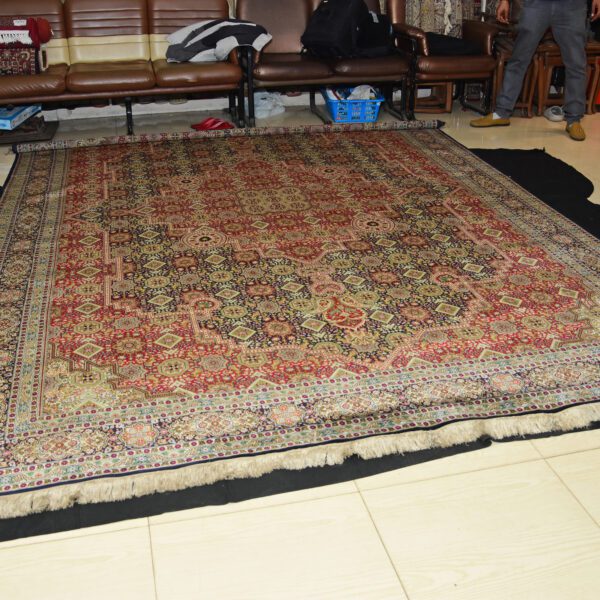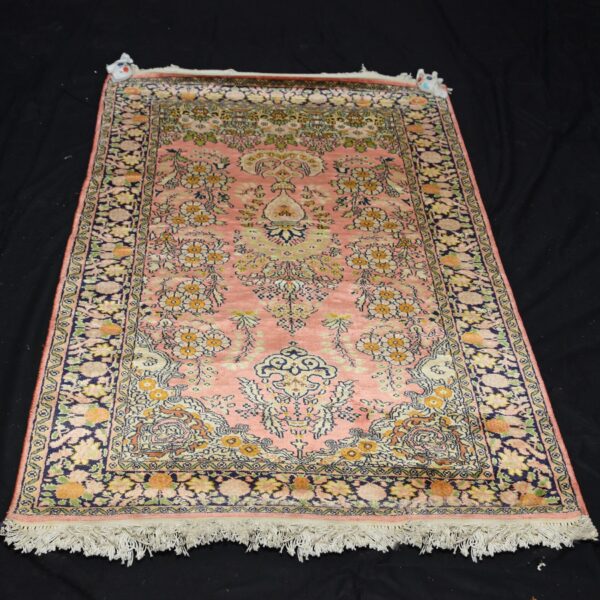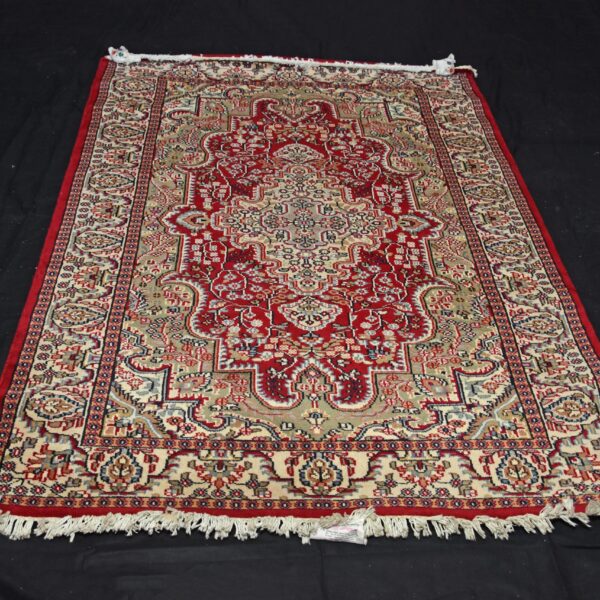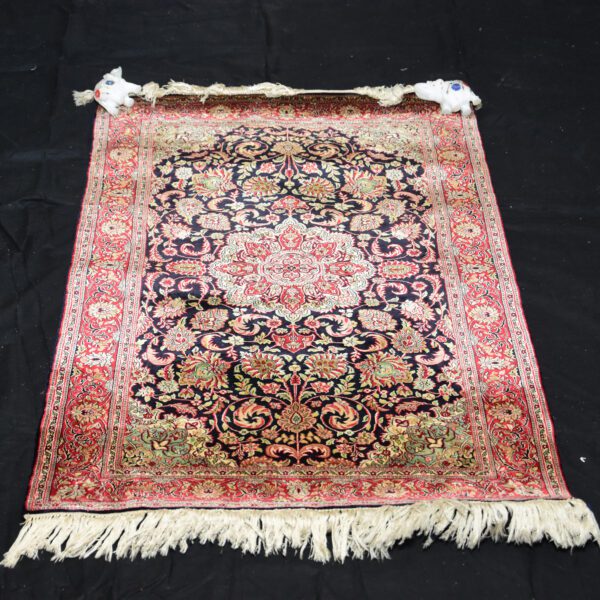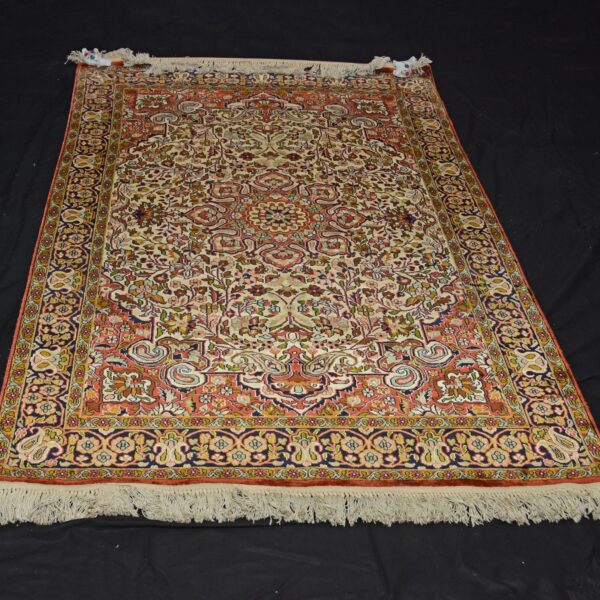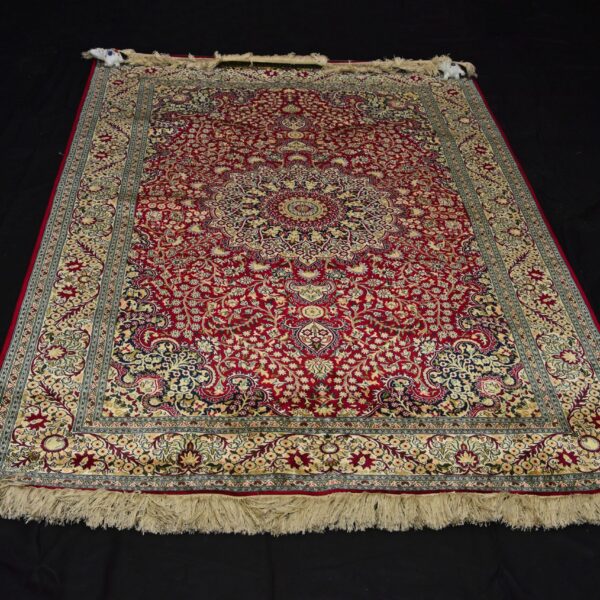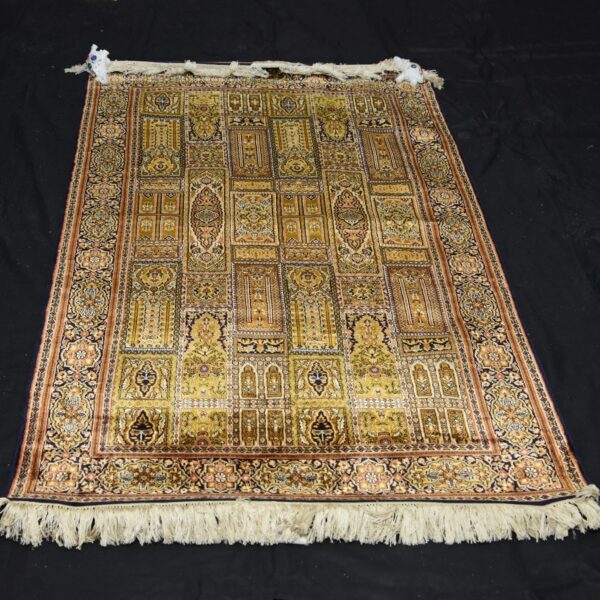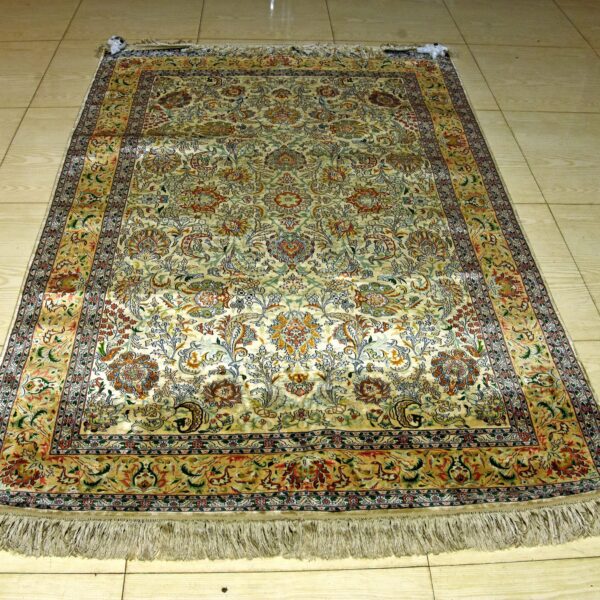Details
Making a silk-on-silk Kashmiri carpet is a labor-intensive and intricate process that involves several steps. Kashmiri carpets are known for their fine craftsmanship, intricate designs, and use of high-quality materials. Here’s a general overview of the process:
1. Designing:
The process begins with the creation of a design, often drawn on graph paper. Skilled artisans, known as “karigars,” play a crucial role in designing the intricate patterns that will be woven into the carpet.
2. Yarn Preparation:
High-quality silk is used for both the warp (lengthwise threads) and weft (crosswise threads) of the carpet. The silk is carefully cleaned, sorted, and dyed to achieve the desired colors.
3. Setting Up the Loom:
The loom is prepared for weaving. The warp threads are stretched tightly on the loom in parallel lines, creating the foundation for the carpet.
4. Knotting:
The actual weaving process involves knotting the pile, which forms the surface of the carpet. The two main types of knots used in Kashmiri carpets are the Persian knot (single knot) and the Turkish knot (double knot). The choice of knotting technique depends on the design and the weaver’s preference.
5. Weaving:
The weaver follows the predetermined design, knotting the silk threads around the warp threads to create the intricate patterns. This process requires great skill and precision, as the weaver must ensure that the knots are consistent and tightly packed.
6. Shearing:
Once a section of the carpet is completed, the pile is often longer than the final desired height. The carpet is then sheared to the appropriate length, revealing the intricate patterns and creating a smooth, even surface.
7. Washing and Finishing:
The completed carpet is thoroughly washed to remove any residual dyes and impurities. After washing, it is left to dry in the sun. Once dry, the carpet undergoes further finishing processes, which may include stretching, ironing, and adding fringes.
8. Quality Control:
Skilled artisans inspect the carpet for any imperfections, ensuring that it meets the quality standards. Any necessary corrections or adjustments are made at this stage.
9. Final Inspection and Packaging:
The finished carpet undergoes a final inspection to ensure that it meets the desired quality and design standards. Once approved, it is carefully rolled, packaged, and prepared for shipment.
Throughout this process, the craftsmanship, attention to detail, and expertise of the artisans contribute to the creation of a high-quality silk-on-silk Kashmiri carpet, which is often considered a work of art.


